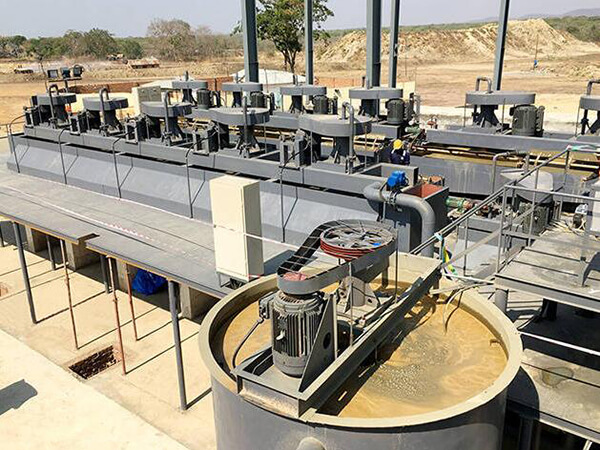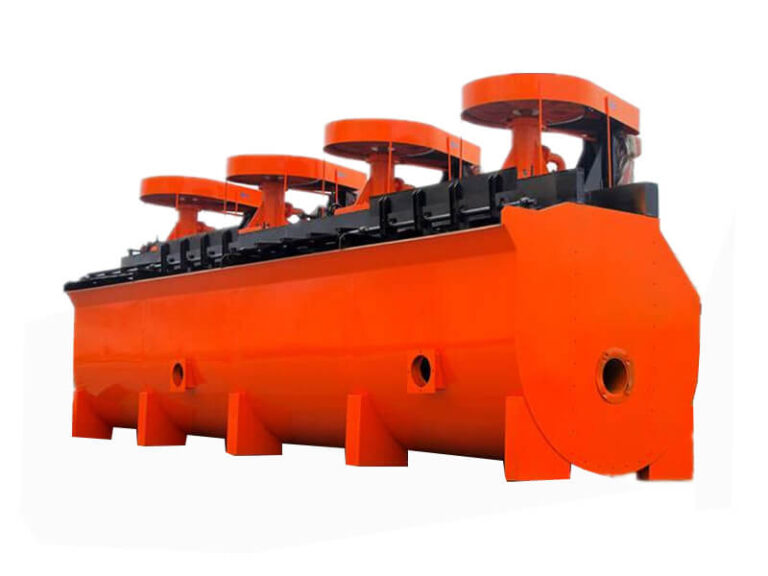Non-ferrous Metals
Flotation Reagent
The selection of effective flotation reagents to deal with the beneficiation of non-ferrous metals is not only the basis for dealing with various resource problems in the mining area but also the way to optimize the whole process of metal mining. There are specific adaptability problems in flotation reagents, such as the variety of flotation reagents with different functions, and their suitable metal range and impact quality are also different. The rational use of flotation reagents requires relevant personnel to do an excellent job of reagent performance testing to ensure the effectiveness of the non-ferrous metal beneficiation work of reagents and improve the construction and development of the entire mining project.
Classification
Foaming agent
The foaming agent is a relatively common chemical agent, mainly presenting the aggregation of granular flocs to ensure the detection of metals. Its primary performance is to detect changes in the activity of metals and changes in physical and chemical properties.
In terms of substance classification, foaming agents are mainly divided into two types: simple foaming agents and trapping foaming agents. In the specific use of the two, the activity changes on the surface of materials are mainly used as the basis for drug control. Analyze the relevant chemical reaction and gas change degree during the use of the agent to detect and analyze the substances in the non-ferrous metal mining area. Generally speaking, it is carried out in non-ferrous metal mineral processing. The primary efficacy of the foaming agent is to use the tension of the bubbles to analyze the metal measurement and analysis of mining exploration.
Regulator
A regulator is the most common treatment mode in flotation agent treatment, and it mainly presents an activator’s effect in the chemical detection reaction. Due to the strict dispersion characteristics of the thousands of regulators, in the process of mining exploration, it presents the form of water glass, lime ions, and organic matter. It is very common to use regulators to detect non-ferrous metal minerals, which can play a particular advantage in exploration. With flotation reagents, the corresponding metals will appear as metal particles flocculent and agglomerated.
Collector
Collectors are relatively common chemical flotation reagents mainly used in the capture and collection of sulfide ores, non-polar minerals, and metal sediments. The corresponding flotation products include xanthate, fatty acids, etc.
In conventional flotation reagent applications, collectors are also widely used. But its core application value is reflected in mineral exploration coordination technology. Due to the long-term burial of thousands of underground metal minerals, the underground materials are gradually oxidized, and the use of collectors for exploration can improve the project’s overall mining strength and capacity. This technology is mainly used in sulfide ores, oxide ores, and some precipitated metals. In addition, xanthate, fatty acid, etc., are selected for the corresponding flotation reagents. These reagents will change significantly when they react with underground minerals. Therefore, analyzing the situation changes of collectors can also ensure the effectiveness and rationality of the survey. Finally, the beneficiation composition analysis and quantitative identification of non-ferrous metals will be completed.
Analyzing the chemical characteristics in the mining of non-ferrous metals can detect the types and physical and chemical properties of metal substances in the mining area in a short time and can combine the corresponding material detection technology and needs to optimize mineral mining plans and programs. Due to the different ranges and degrees of influence of different agents, to ensure the high efficiency of non-ferrous metal mining quality, it is recommended that mining personnel should adapt to local conditions and select effective agents to adjust and optimize the use of agents.

Analysis of Rational Use of Flotation Reagents for Non-ferrous Metal Beneficiation
To ensure the accuracy and effectiveness of non-ferrous metal beneficiation, relevant personnel need to improve the quality of beneficiation work and combine the characteristics of non-ferrous metal beneficiation with doing an excellent job of beneficiation technology and rational application of flotation reagents. It lays the foundation for the selected metal minerals to ensure the implementation and selection of related agents to promote agents’ overall selection and ability transformation.
Enhanced Reagents Analysis Selection
Analyzing flotation agents is a physical and chemical reaction process, and flotation agents are a comprehensive chemical agent, laying the foundation for the construction and development of non-ferrous metal mining projects. In the development process of non-ferrous metal mining, the scope of agent selection is constantly expanding.
Suggestions on strengthening and optimizing the beneficiation quality of non-ferrous metals:
- Relevant units combine the integrity of mineral processing to implement the mining needs of mining projects fully.
- Managers of mining areas choose effective flotation reagents and mineral exploration methods in mineral mining and development.
- Analyze the application advantages of each flotation agent and then analyze and optimize its specific application advantages and mineral technology. Apply it to every mineral exploration requirement to optimize the application of flotation agents and give full play to its application and use effectiveness.
- Enhanced reagents need to do an excellent job in reagent testing and analysis. The progress in the flotation of various types of mineral raw materials is closely related to the active development, production, and promotion of new high-efficiency flotation reagents.
- Relevant personnel should strengthen relevant testing and research, such as the potentiometric method and ion measurement method, when analyzing the performance of pharmaceuticals to ensure that these new pharmaceuticals meet the conditions of modern testing equipment and perfect beneficiation process and ensure the effectiveness of the pharmaceuticals.

Flotation Reagent Matching Analysis
Recommendations for optimizing the application process of the entire flotation reagent
- In the general new technology application and analysis process, the relevant management personnel actively integrate the use efficiency of the entire applied reagentand integrate it for its reagent. In this way, it is ensured that the agent can exert the overall agent application performance in the user control treatment, laying the foundation for the mining of non-ferrous metals.
- Based on the above, relevant personnel optimize the test and research of flotation reagents to ensure that the matching reagents can meet the various technical processing requirements in metal exploration.
- With the help of the combination and treatment of the general reagent, ensure that the proportion of the reagent is reasonable.
- The scope of the application is very coordinated so as to give full play to the work and application requirements of mining chemicals.
Reagent Concentration Control
The control of reagent concentration directly relates to the whole flotation reagent processing and integration. In traditional metal ore mining, the reagent concentration control range for metal selection is relatively strict, and it greatly impacts the entire metal exploration and analysis. In this regard, suggesting relevant units should strengthen the application and analysis of drug concentration when dealing with this industry to ensure the mining of non-ferrous metal beneficiation.

